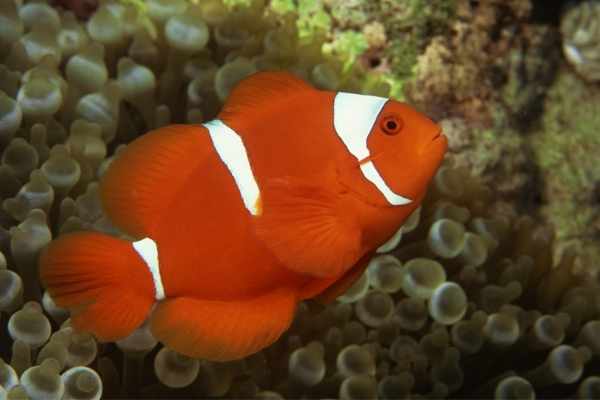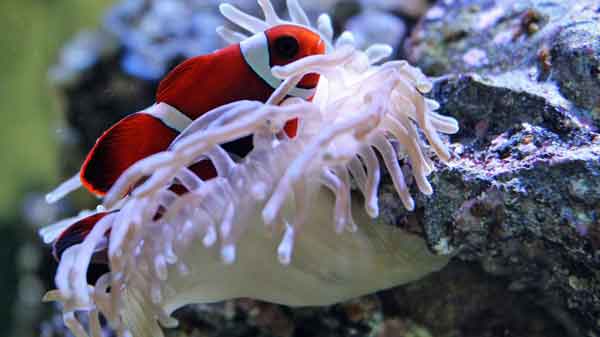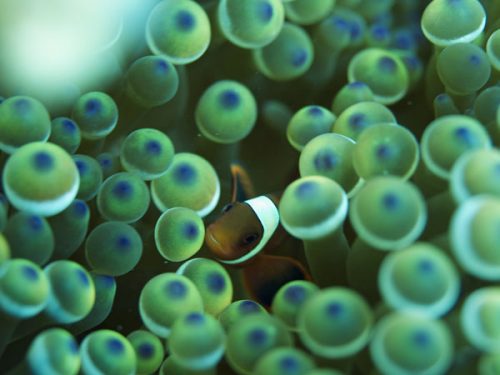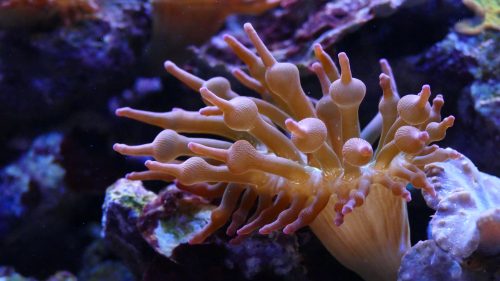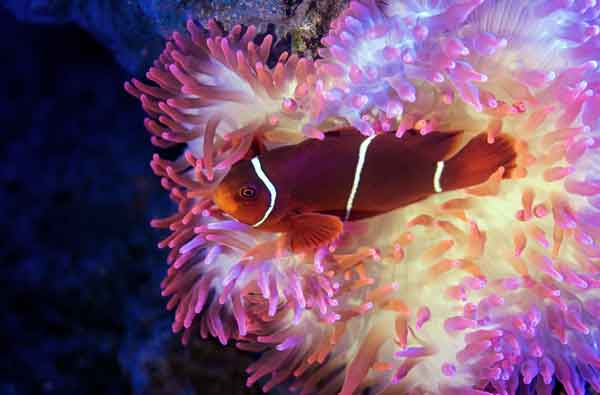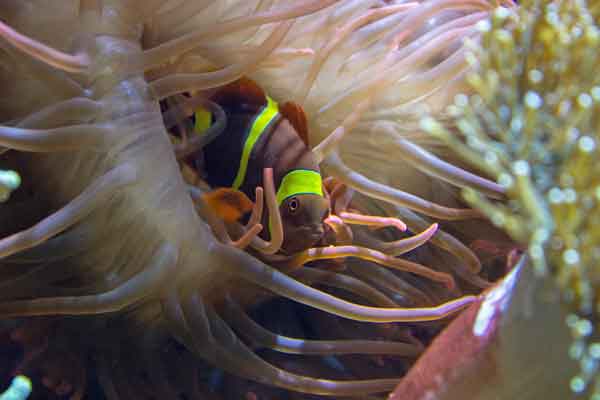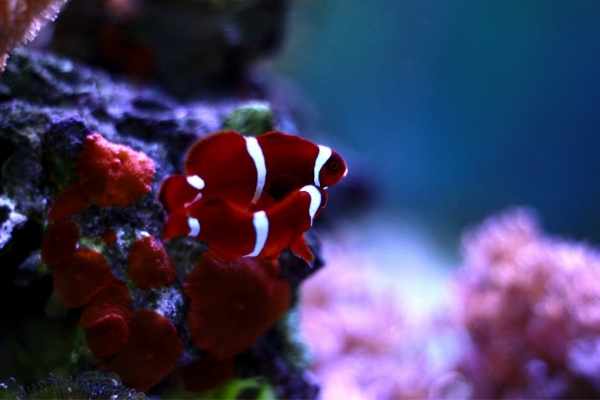[ad_1]
The Maroon Clownfish, Premnas biaculeatus, is one of the most popular and iconic reef tank fish. They are one of the top 20 most popular saltwater fish species because of their awesome maroon red coloration and 3 white or gold stripes. There is also a few “designer” variety of this fish available from ORA Farms called Lightning Maroon and Gold Flake.
Table of contents:
Aquarium quick facts
- Common name: Maroon clownfish, Gold striped maroon (designer), or Lightning maroon (designer)
- Scientific name: Premnas biaculeatus
- Max size: ~6 inches (15 cm) for a large female, about half that for male
- Lifespan: ~3-7 years perhaps typical, ~15+ for highly successful
- Tank size: 55 gallons or larger
- Care level: Easy, suitable for beginners (except for the aggression, see below)
- Reef safe: yes, completely reef safe
- Aggression level: Aggressive, especially when paired up and spawning
How big do Maroon clownfish get?
Maroon clownfish can get pretty large, growing up to about 6 inches, in length, with the female clownfish being much larger and more aggressive than the male.
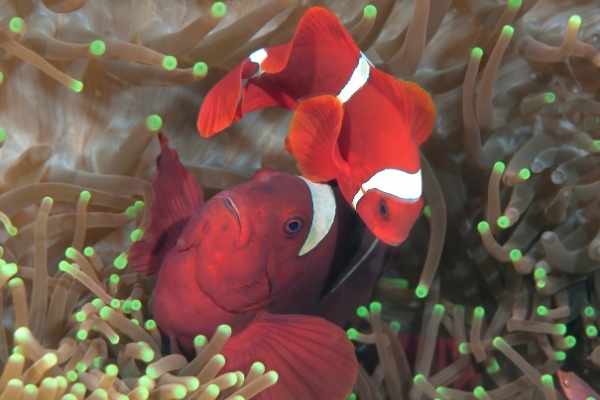
Look at the size difference between the female and male maroon clownfish
How long do they live?
MC’s tend to live about 3-7 years, on average. Keep in mind that your individual fish may not live an average life—it could die much older (some saltwater fish live upwards of about 17-20 years) or younger—3-7 years is just a rough estimate of what to expect from a healthy ‘typical’ experience.
What is their ideal habitat?
These are hardy fish and are tolerant of moderate changes in water chemistry and parameters. Try, though, to keep water in stable conditions in order to provide the best and most healthy environment for your tank inhabitants. As for the tank size, a single Maroon Clownfish requires at least 30-gallons of living space. It is best to keep a pair of fish in a tank that is 55-gallons, or larger.
Regardless of the size of your aquarium, once you add 1-2 maroon clownfishes, they will consider the entire tank to be THEIR TERRITORY–and they will defend it! If you’re planning to keep a pair —be sure to give them a lot of space and ample hiding places within the live rock to allow the male to escape the aggression of the female fish that is much larger than he, or you might just end up with one lonely female.
What do Maroon clownfish eat?
Maroon Clownfish are quite easy to feed because they are not picky fish. In the wild, they would mainly eat zooplankton they would find in the ocean. In the home aquarium, they will eat just about anything you feed them—flakes, pellets, Mysis shrimp, brine shrimp, black worms.
I generally recommend that you try to feed your fish 2-3 times a day, if possible, although it is certainly possible to keep them relatively healthy with a single, sufficiently sized feeding if life gets in the way.
Are they aggressive?
Yes, Maroon clownfish are one of the most aggressive and territorial species of Clownfish. They are notoriously territorial and should be the last fishes you add to the tank, if possible. If you choose to add them to your saltwater aquarium, it is recommended you add them to the tank last, so that every other fish has a chance to establish their territories before the maroon clownfish.
What kind of anemone do Maroon clownfish like?
Maroon clownfish are most commonly paired with the Bubble tip Anemone, Entactaea quadricolor, although they may also be paired with (less commonly): Macrocactyla doreensis, Cyrptodendrum adhaesivum, or Heteractis malu, commonly referred to as the Corkscrew tentacle, Adhesive and Delicate sea anemones, respectively.
A caution against adding a sea anemone
Many new aquarium owners get their first tank because they imagine themselves with a clownfish pair, swimming in an anemone, but the problem with that ideal vision is that most anemones grow slowly in the open ocean, are wild-caught, and have a terrible track record of success in the hobby (although I haven’t seen any specific, reputable, recent reports about that). (Wilkerson 2001)
If you do have your heart set on an anemone for your clownfish, check out the Bubble Tip Anemone (Entacmaea quadricolor), because they do relatively well in captivity and are even fragged by many aquarists, once they get large enough. They are also one of a few species that naturally host in maroon clownfishes the wild.
However, please note that your clownfish do not need an anemone to be happy and healthy in your tank. In fact, most people do not have an anemone in their tanks.
Do maroon clownfish have to be kept in pairs?
No, you do not have to keep Maroon clownfish as a pair. The choice is up to you. Keeping a solo fish will likely reduce the amount of aggression displayed by them, however, you will also not get to see their natural pairing and bonding behaviors which are often part of the charm in keeping them in a home aquarium.
Pairing up and breeding
If you plan on keeping a pair of these fish in your tank, the traditional advice (check out Wilkerson’s book), is to attempt to pair up a large fish with a small fish. Clownfishes are protandrous hermaphrodites, which is a fancy, technical term that explains that they can change gender, in one direction. They all start out as males but can change gender to become female.
The female is the larger and more dominant of the two. If you introduce two similarly-sized juvenile males, you run the risk that the two fight to the death, or significant detriment of the other. If, however, you introduce a large and small fish, the lopsided battle for dominance will more likely be won swiftly and with less damage to the losing male.
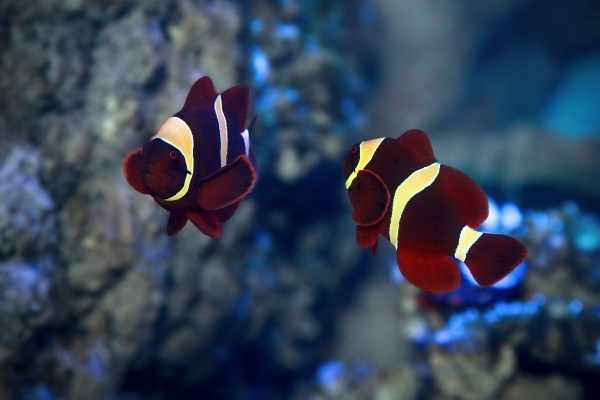
It is not recommended to put two similarly sized fish in the tank at the same time. One fish will likely lose in dramatic fashion
For more information about pairing up these fish or breeding them, check out this book: Clownfishes, by Joyce D. Wilkerson.
If you can establish a pair, without losing the male, and if you can provide them with enough space, Maroon Clownfish are said to be moderately easy to breed. The eggs and larvae are large, relative to most other saltwater fish, so they are on the easier end of the spectrum, in terms of ease of feeding after hatching.
Once laid, a fascinating behavior to watch is how the parents (mostly the male) tend to the eggs like a freshwater cichlid would and hatch in about a week, and a healthy, well-fed pair will spawn on a relatively routine interval (about 4-6 weeks, although individual pairs will establish their own pattern.
Courtship takes place about 3 to 5 days before actually spawning.
As they begin their courting ritual, they will clean a rocky area near the anemone, to provide an adequate place for the eggs to adhere to. They display an intricate courting dance, including leaning towards each other, touching various parts of their bodies, or head shaking.
Can you mix maroon clownfish?
No, do not keep them in the same tank as any other clownfish species. If you do, there is a very good chance the other clownfish will be killed by the maroons.
Designer clownfish types
There are two very popular designer types available in the hobby: the Gold Striped Maroon Clownfish and the Lightning Maroon Clownfish
Gold striped Maroon Clownfish vs. White striped
The first ‘designer’Premnas biaculeatus I was aware of was the Gold striped Maroon clownfish. You can see, throughout this article, there have been white-striped and gold varieties used relatively interchangeably.
All Maroon Clownfish are born with white stripes, but some of them, as pictured below, grow into their yellow stripes as they mature (often more than a year later).
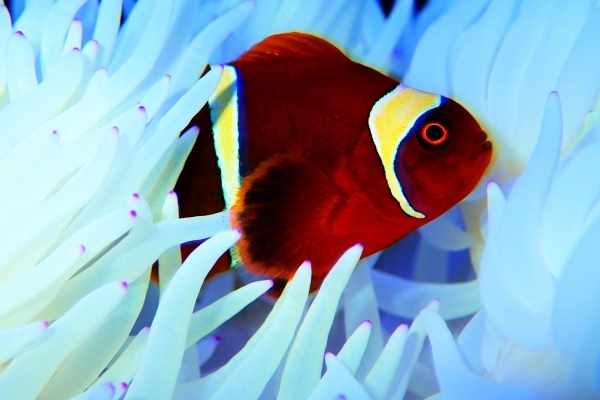
Note the gold strips of this variety
Some might not consider these to truly be a ‘designer’ option, because they have been available for so long, but they certainly are a color variant for you to consider before you ultimately make your purchase.
Lightning Maroon Clownfish
The Lightning Maroon clownfish, on the other hand, is a designer variant that took the hobby by storm (pun intended, of course).
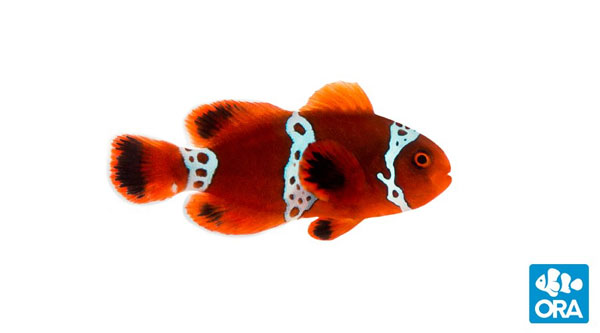
Lightning Maroon Clownfish from ORA
They get their name because the stripes by their gills, tail, and middle of their bodies that are typically solid have an erratic, chain, and/or electrical pattern to them. Everything else about the care and aquarium conditions applies to them the same, they are just a bit more rare (and more expensive).
Conclusions
- Maroon Clownfish are very territorial and aggressive
- Best kept in a tank ~55-gallons or larger
- Do not require anemones to be happy and healthy
- Strongly recommend getting a common, Percula or Tomato clownfish instead
Next steps
If you want free help to Build a Better Saltwater Aquarium, please
Join the Saltwater Aquarium Blog Community
Check out this article on breeding clownfishes, if you’re interested in trying that
or
Watch this video to dive deeper into caring for the maroon clownfish
Pin this article on Pinterest
References:
Wilkerson, Joyce D. Clownfishes: A Guide to Their Captive Care, Breeding & Natural History. T.F.H Publications. 2001. Neptune City, NJ.
[ad_2]
Source link

